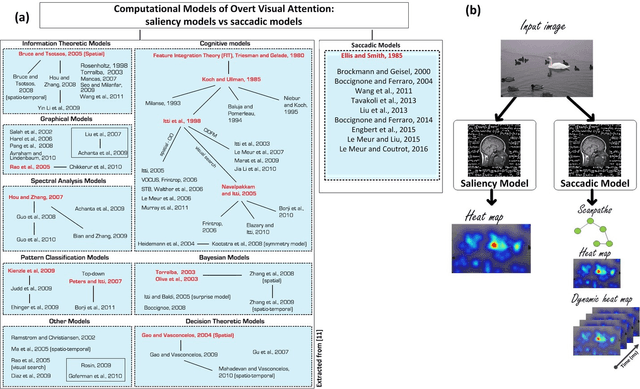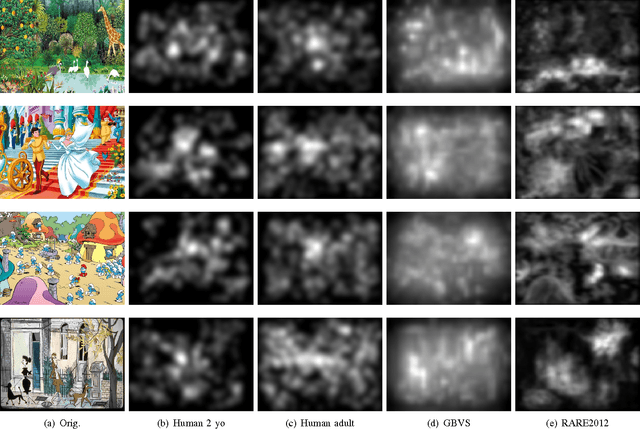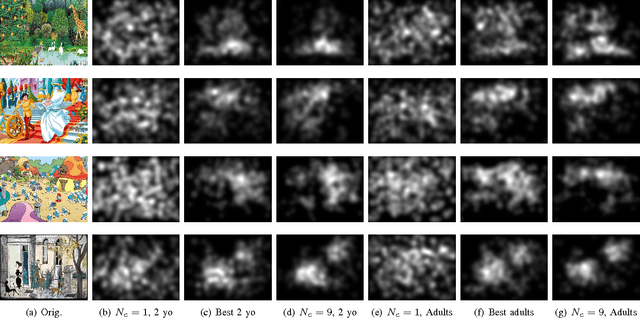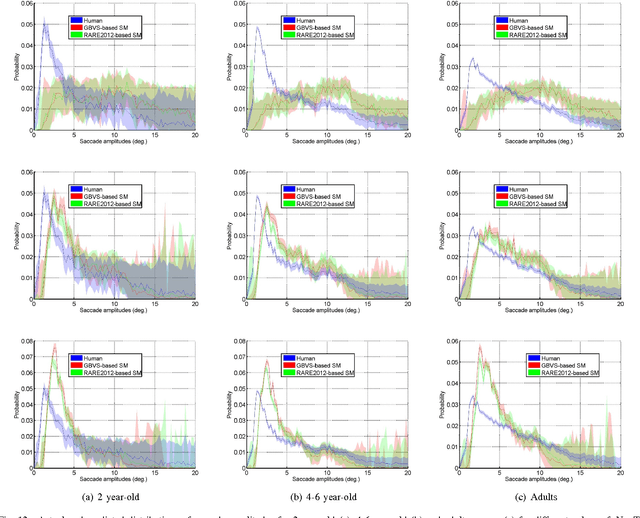Pia Rama
Computational Model for Predicting Visual Fixations from Childhood to Adulthood
Feb 15, 2017



Abstract:How people look at visual information reveals fundamental information about themselves, their interests and their state of mind. While previous visual attention models output static 2-dimensional saliency maps, saccadic models aim to predict not only where observers look at but also how they move their eyes to explore the scene. Here we demonstrate that saccadic models are a flexible framework that can be tailored to emulate observer's viewing tendencies. More specifically, we use the eye data from 101 observers split in 5 age groups (adults, 8-10 y.o., 6-8 y.o., 4-6 y.o. and 2 y.o.) to train our saccadic model for different stages of the development of the human visual system. We show that the joint distribution of saccade amplitude and orientation is a visual signature specific to each age group, and can be used to generate age-dependent scanpaths. Our age-dependent saccadic model not only outputs human-like, age-specific visual scanpath, but also significantly outperforms other state-of-the-art saliency models. In this paper, we demonstrate that the computational modelling of visual attention, through the use of saccadic model, can be efficiently adapted to emulate the gaze behavior of a specific group of observers.
 Add to Chrome
Add to Chrome Add to Firefox
Add to Firefox Add to Edge
Add to Edge